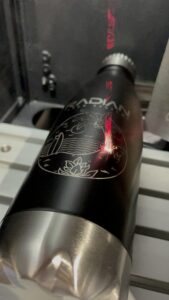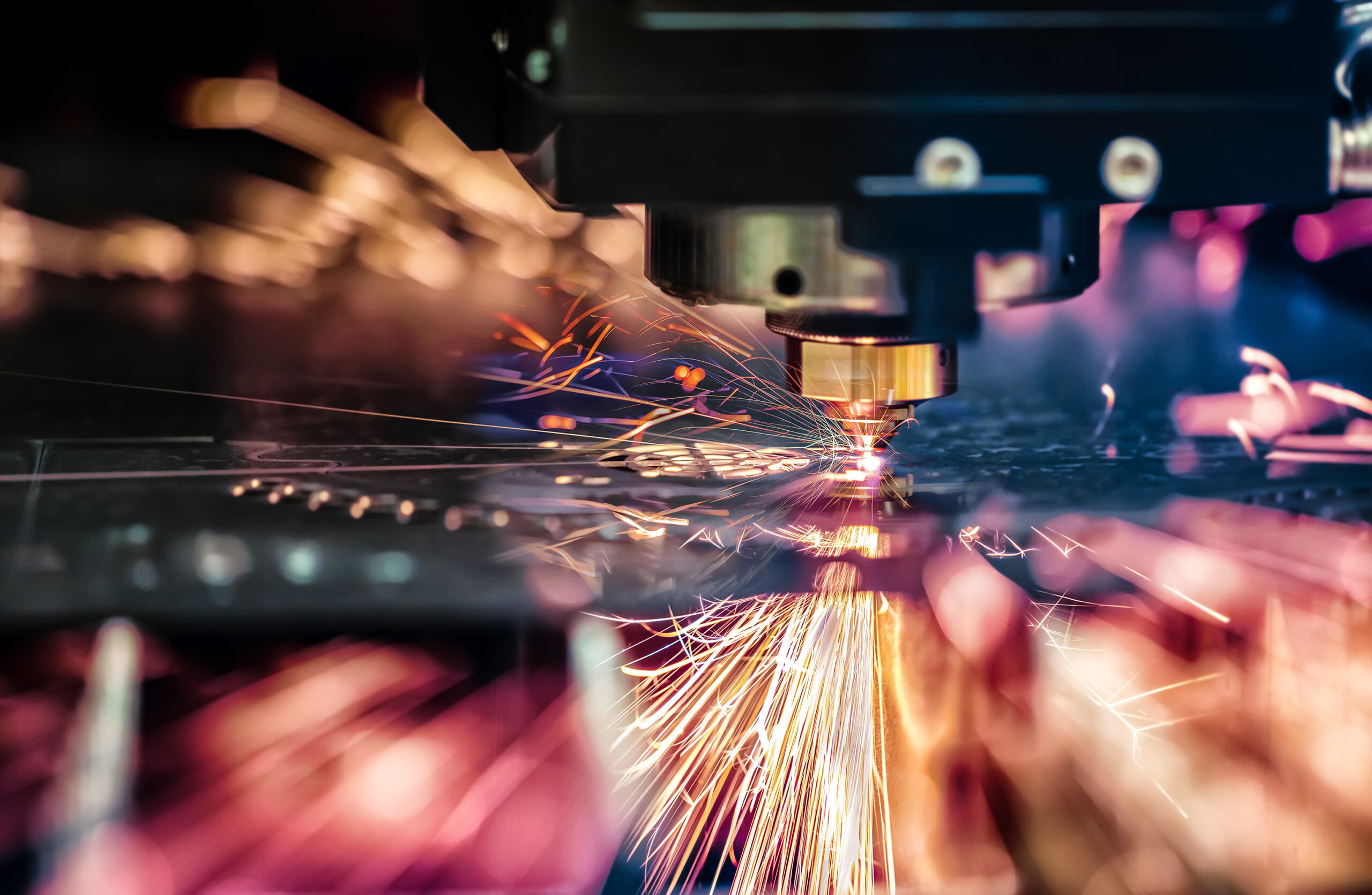One of the most common questions I get asked at trade shows is, “What makes a galvo-based laser different from a flatbed laser?
Simply put, high-performance galvanometer (aka galvo) based laser systems are specifically designed for marking and engraving. While they can also cut some materials, this is not their main purpose. In other words, they’re marking machines that also “cut.” This statement is in contrast to traditional flatbed cutting machines, which also “mark.”
Flatbed laser systems
Flatbed laser systems are widely used in a variety of industries and applications to cut various types of flat materials. These systems are offered in a variety of sizes to accommodate a wide variety of marking materials and business needs.
These types of systems are sometimes referred to as “gantry type” systems because they incorporate a series of mirrors and lenses which are moved around the cutting field on a two-axis gantry. The laser in these systems is in a fixed position, and the gantry moves the optics on the X/Y axis above the surface of the object being cut or marked. Due to the physical size and mass of the components being moved, these systems tend to be relatively slow.
Traditional flatbed lasers are good for cutting and marking at a fixed focus on flat surfaces. You can achieve curved cutting or marking through a rotary attachment, but due to the fixed focus, the operation is typically slower.
Galvo-based laser systems
The traditional galvo-based system incorporates a fixed position laser that has its output energy projected through a set of motor-driven mirrors that are used to move the beam in an X/Y direction over the workpiece. Note that the galvo doesn’t move, but the beam is moved instead. Galvo-based systems are inherently faster as it is and quicker to move the small mass of a mirror mounted to motors as opposed to moving large mirrors, lenses, and even second axis motors (as is common with flatbed gantry type systems.)

3-axis, or 3D technology, further enhances the traditional galvo-based system. 3D technology allows for marking over curves and doing true 3D relief engraving. This is achieved through the use of a 3-axis dynamic focus module, which is essentially a third axis, the “z-axis,” which can be controlled to automatically and dynamically change the laser beam’s focus as it moves over the irregular surface. This technology thus improves marking productivity speeds relative to a flatbed system.
To take advantage of this speed, it’s best to combine this technology with automation add-ons such as disc rotary indexers and shuttle tables. Most businesses utilizing 3D galvo-based systems with these automation tools experience improvement in their marking speed.
Due to their size and how they operate, galvo-based systems are highly flexible and can be mounted in a variety of enclosure types, such as an open frame or fully enclosed, or incorporated into an existing production environment to suit the application at hand. Galvo-based systems are also available in Fiber, CO2, or UV — allowing for further flexibility.
2D vs. 3D galvo-based technology
2D and 3D laser systems function somewhat differently and are often used for different applications or purposes. Referring to something as a 2D laser would imply that it’s used for marking flat surfaces, while 3D allows for marking on non-flat (curved or otherwise) surfaces and for relief engraving.

Traditional 2D galvo-based solutions use an f-theta lens to perform field flattening, while 3D solutions typically use a dynamic focusing module to field flatten and also keep the beam in focus over non-flat surfaces. This requires specialized software, electronics, and optomechanical elements to achieve this capability.
In the case of marking non-flat/3D, the software is provided with the specific dimensions of the part to be marked. The workpiece is positioned under the galvo. The galvo is instructed by the controller to move the beam in an X/Y motion, and at the same time, the dynamic focus module is keeping the beam in focus based on the parameters provided to the software in conjunction with the part dimensions. This whole process is quite complex, but when done properly, can achieve great results.
In short
Traditional flatbed lasers can mark on flat surfaces and require specialized fixtures, workpiece holders, and rotational systems in order to mark in 3D (over curves). 3-axis systems can mark on curved surfaces without a rotary attachment using galvo-based 3D technology.




